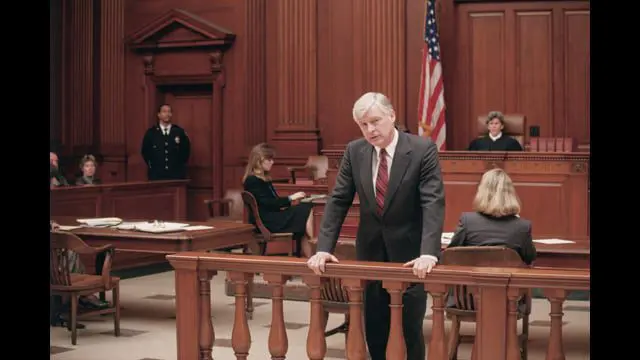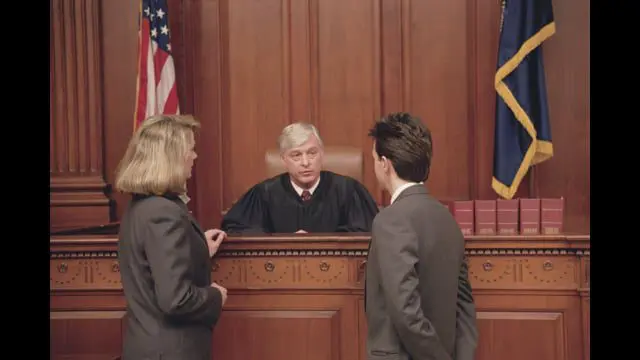In a significant ruling, the Tribunal Supremo sharply curtailed the power of federal agencies to interpret the laws they administer, ruling that courts should rely on their own interpretation of ambiguous laws. This landmark decision is expected to have far-reaching effects across the country, impacting areas such as environmental regulation and healthcare costs.
By a vote of 6-3, the justices overruled their landmark 1984 decision in Chevron v. Natural Resources Defense Council, which gave rise to the doctrine known as the Chevron doctrine. Under this doctrine, if Congress had not directly addressed the question at the center of a dispute, a court was required to uphold the agency’s interpretation of the statute as long as it was reasonable. However, in a 35-page ruling by Chief Justice John Roberts, the justices rejected that doctrine, calling it “fundamentally misguided.”
The Chevron Doctrine: A Historical Perspective
The Chevron doctrine has been a cornerstone of administrative law since its inception in 1984. It established that if a statute is ambiguous, courts should defer to the agency’s interpretation, provided it is reasonable. This doctrine was designed to acknowledge the expertise of federal agencies in their respective fields and reduce judicial interference in complex regulatory matters.
However, over the years, the Chevron decision, which initially upheld the Reagan-era Environmental Protection Agency’s interpretation of the Clean Air Act to ease regulation of emissions, became a target for those seeking to limit the administrative state. Critics argued that courts, rather than federal agencies, should have the final say on what the law means.
Supreme Court’s Landmark Decision
In a major ruling on Friday, the Supreme Court decided to cut back sharply on the power of federal agencies to interpret the laws they administer. This decision will likely have far-reaching effects across the country, from environmental regulation to healthcare costs.
By a vote of 6-3, the justices overruled their landmark 1984 decision in Chevron v. Natural Resources Defense Council, which gave rise to the doctrine known as the Chevron doctrine. Under that doctrine, if Congress has not directly addressed the question at the center of a dispute, a court was required to uphold the agency’s interpretation of the statute as long as it was reasonable. But in a 35-page ruling by Chief Justice John Roberts, the justices rejected that doctrine, calling it “fundamentally misguided.”
Justice Elena Kagan dissented, in an opinion joined by Justices Sonia Sotomayor and Ketanji Brown Jackson. Kagan predicted that Friday’s ruling “will cause a massive shock to the legal system.”
When the Supreme Court first issued its decision in the Chevron case more than 40 years ago, the decision was not necessarily regarded as a particularly consequential one. But in the years since then, it became one of the most important rulings on federal administrative law, cited by federal courts more than 18,000 times.
Case Analysis: Environmental and Financial Regulations
Although the Chevron decision upheld the Reagan-era Environmental Protection Agency’s interpretation of the Clean Air Act that eased regulation of emissions, the ruling eventually became a target for those seeking to curtail the administrative state. They argued that courts, rather than federal agencies, should determine what the law means. The justices had rebuffed earlier requests to consider overruling Chevron before they agreed last year to take up a pair of challenges to a rule issued by the National Marine Fisheries Service. The agency required the herring industry to pay for the costs, estimated at $710 per day, associated with carrying observers on board their vessels to collect data about their catches and monitor for overfishing.
The agency stopped the monitoring in 2023 due to a lack of funding. While the program was in effect, the agency reimbursed fishermen for the costs of the observers.
After two federal courts of appeals rebuffed challenges to the rules, two sets of commercial fishing companies came to the Supreme Court, asking the justices to weigh in. The justices took up their appeals, agreeing to address only the Chevron question in Relentless v. Department of Commerce y Loper Bright Enterprises v. Raimondo. (Justice Ketanji Brown Jackson dissented in the Relentless case but was recused from the Loper-Bright case, presumably because she had heard oral argument in the case while she was still a judge on the U.S. Court of Appeals for the District of Columbia Circuit.)
Legal Interpretation and Judicial Oversight
Chevron deference, Chief Justice John Roberts explained in his opinion for the court, is inconsistent with the Administrative Procedure Act (APA), a federal law that sets out the procedures that federal agencies must follow as well as instructions for courts to review actions by those agencies. The APA, Roberts noted, directs courts to “decide legal questions by applying their own judgment” and therefore “makes clear that agency interpretations of statutes—like agency interpretations of the Constitution—are not entitled to deference. Under the APA,” Roberts concluded, “it thus remains the responsibility of the court to decide whether the law means what the agency says.”
Roberts rejected any suggestion that agencies, rather than courts, are better suited to determine what ambiguities in a federal law might mean. Even when those ambiguities involve technical or scientific questions that fall within an agency’s area of expertise, Roberts emphasized, “Congress expects courts to handle technical statutory questions”—and courts also have the benefit of briefing from the parties and “friends of the court.”
Moreover, Roberts observed, even if courts should not defer to an agency’s interpretation of an ambiguous statute that it administers, they can consider that interpretation when it falls within the agency’s purview, a doctrine known as Skidmore deference.
Stare Decisis and Overruling Chevron
Stare decisis—the principle that courts should generally adhere to their past cases—does not provide a reason to uphold the Chevron doctrine, Roberts continued. Roberts characterized the doctrine as “unworkable,” one of the criteria for overruling prior precedent, because it is so difficult to determine whether a statute is indeed ambiguous.
And because of the Supreme Court’s “constant tinkering with” the doctrine, along with its failure to rely on the doctrine in eight years, there is no reason for anyone to rely on Chevron. To the contrary, Roberts suggested, the Chevron doctrine “allows agencies to change course even when Congress has given them no power to do so.”
Roberts indicated that the court’s decision would not require earlier cases that relied on Chevron to be overturned. “Mere reliance on Chevron cannot constitute a ‘special justification’ for overruling” a decision upholding agency action, “because to say a precedent relied on Chevron is, at best, just an argument that the precedent was wrongly decided”—which is not enough, standing alone, to overrule the case.
The Supreme Court is expected to rule on Monday on when the statute of limitations to challenge agency action begins to run. The federal government has argued in that case, Corner Post v. Federal Reserve, that if the challenger prevails, it would open the door for a wide range of “belated challenges to agency regulation.”
Concurring Opinions: Thomas and Gorsuch
Justice Clarence Thomas penned a brief concurring opinion in which he emphasized that the Chevron doctrine was inconsistent not only with the Administrative Procedure Act but also with the Constitution’s division of power among the three branches of government. The Chevron doctrine, he argued, requires judges to give up their constitutional power to exercise their independent judgment, and it allows the executive branch to “exercise powers not given to it.”
Justice Neil Gorsuch filed a longer (33-page) concurring opinion in which he emphasized that “[t]oday, the Court places a tombstone on Chevron no one can miss. In doing so, the Court returns judges to interpretative rules that have guided federal courts since the Nation’s founding.” He sought to downplay the impact of the ruling, contending that “all today’s decision means is that, going forward, federal courts will do exactly as this Court has since 2016, exactly as it did before the mid-1980s, and exactly as it had done since the founding: resolve cases and controversies without any systemic bias in the government’s favor.”
Dissenting Opinion: Justice Kagan
Justice Elena Kagan, who read a summary of her dissent from the bench, was sharply critical of the decision to overrule the Chevron doctrine. Congress often enacts regulatory laws that contain ambiguities and gaps, she observed, which agencies must then interpret. The question, as she framed it, is “[w]ho decides which of the possible readings” of those laws should prevail?
For 40 years, she stressed, the answer to that question has generally been “the agency’s,” with good reason: Agencies are more likely to have the technical and scientific expertise to make such decisions. She emphasized the deep roots that Chevron has had in the U.S. legal system for decades. “It has been applied in thousands of judicial decisions. It has become part of the warp and woof of modern government, supporting regulatory efforts of all kinds—to name a few, keeping air and water clean, food and drugs safe, and financial markets honest.”
By overruling the Chevron doctrine, Kagan concluded, the court has created a “jolt to the legal system.”
Kagan also pushed back against the majority’s suggestion that overruling the Chevron doctrine would introduce clarity into judicial review of agency interpretations. Noting the majority’s assurances that agency interpretations may be entitled to “respect” going forward, she observed that “[i]f the majority thinks that the same judges who argue today about where ‘ambiguity’ resides are not going to argue tomorrow about what ‘respect’ requires, I fear it will be gravely disappointed.”
Similarly, she questioned the majority’s assertion that the decision would not call into question decisions that relied on the Chevron doctrine to uphold agency action. “Courts motivated to overrule an old Chevron-based decision can always come up with something to label a ‘special justification,’” she posited. “All a court need do is look to today’s opinion to see how it is done.”
More broadly, Kagan rebuked her colleagues in the majority for what she characterized as a judicial power grab. She lamented that, by overruling Chevron, the court had, in “one fell swoop,” given “itself exclusive power over every open issue—no matter how expertise-driven or policy-laden—involving the meaning of regulatory law.”
Industry Reactions and Future Implications
Roman Martinez, who argued the case on behalf of one of the fishing companies, applauded the decision. “By ending Chevron deference,” he said in a statement, “the Court has taken a major step to preserve the separation of powers and shut down unlawful agency overreach. Going forward, judges will be charged with interpreting the law faithfully, impartially, and independently, without deference to the government. This is a win for individual liberty and the Constitution.”
However, Kym Meyer, the litigation director for the Southern Environmental Law Center, decried the ruling in a statement. “[T]he Supreme Court today says individual judges around the country should decide the best reading of a statute. That is a recipe for chaos, as hundreds of federal judges—who lack the expertise of agency personnel—are certain to reach inconsistent results on the meaning of federal laws as applied to complex, technical issues.”
Friday’s ruling came in one of three cases during the 2023-24 term seeking to curtail the power of federal agencies—a conservative effort sometimes dubbed the “war on the administrative state.” In October, the court heard arguments in a challenge to the constitutionality of the mechanism used to fund the consumer watchdog Consumer Financial Protection Bureau. Last month the court upheld the CFPB’s funding by a 7-2 vote. And on Thursday, the justices pared back the power of the Securities and Exchange Commission and other administrative agencies, holding that the SEC cannot continue to use in-house proceedings to impose fines in securities fraud cases.
Broader Impact on Federal Regulations
The Supreme Court’s decision to strike down the Chevron doctrine will likely have a profound impact on federal regulations across various sectors, including environmental protection, financial regulation, and public health.
Environmental Protection: Federal agencies like the Environmental Protection Agency (EPA) will face greater challenges in implementing and enforcing environmental regulations. This could lead to more legal challenges and slower regulatory processes, potentially hindering efforts to address pressing environmental issues such as climate change and pollution control.
Reglamento financiero: Financial regulatory bodies, such as the Financial Industry Regulatory Authority (FINRA) and the Securities and Exchange Commission (SEC), will also be impacted. The decision may result in more judicial challenges to financial regulations, necessitating clearer legislative mandates and potentially leading to increased market uncertainty.
Salud pública: Agencies responsible for public health regulations, including the Food and Drug Administration (FDA) and the Centers for Disease Control and Prevention (CDC), may encounter difficulties in swiftly responding to public health crises. The increased judicial oversight could slow down the implementation of health regulations, affecting areas such as food safety, drug approvals, and disease control.
The Role of Congress and Future Legislation
With the Chevron doctrine no longer providing judicial deference to agency interpretations, the responsibility now shifts to Congress to draft clear and precise legislation. This change underscores the importance of legislative clarity in ensuring effective regulatory implementation and enforcement.
Legislative Clarity: Congress must take a proactive approach in drafting laws that minimize ambiguity and provide clear guidance to federal agencies. This will involve thorough legislative processes and greater collaboration with regulatory experts to ensure that laws are comprehensive and unambiguous.
Future Legislation: The Supreme Court’s decision may prompt Congress to revisit and amend existing laws to clarify their intent and scope. This could lead to significant legislative activity aimed at refining and updating federal statutes to align with the new judicial landscape.
Bipartisan Cooperation: Achieving legislative clarity will require bipartisan cooperation in Congress. Lawmakers must work together to address regulatory challenges and ensure that new legislation is effective in achieving its intended goals while providing clear directives to federal agencies.
Consideraciones jurídicas y éticas
The removal of the Chevron doctrine introduces several legal and ethical considerations for federal agencies, legal professionals, and policymakers.
Consideraciones jurídicas: Federal agencies must navigate the new regulatory landscape with increased judicial scrutiny. This will involve developing robust legal justifications for their actions and ensuring that their interpretations of statutes align with congressional intent.
Consideraciones éticas: Ensuring that agencies operate within their legal bounds while effectively protecting public interests is a key ethical concern. Agencies must balance regulatory efficiency with accountability and transparency, avoiding overreach and ensuring that their actions are justifiable.
Impact on Legal Practice: Legal professionals must adapt to the changing landscape of administrative law and regulatory authority. This includes staying informed about legal developments, advising clients on compliance, and representing clients in regulatory disputes.
Conclusión
The Supreme Court’s decision to strike down the Chevron doctrine represents a significant shift in administrative law and the balance of power between the judiciary and federal agencies. This ruling curtails the judicial deference previously granted to agency interpretations, increasing judicial oversight and accountability.
By understanding the implications of this decision, businesses, policymakers, and the general public can navigate the evolving regulatory landscape more effectively. Federal agencies must adapt to this new framework, ensuring that their actions align with congressional intent and withstand judicial scrutiny.
Abogados.Media serves as a valuable resource for individuals seeking to understand the impact of the Supreme Court’s decision and connect with legal professionals who can provide guidance and support in navigating complex regulatory issues. Through comprehensive legal analysis and expert insights, Attorneys.Media helps individuals and businesses stay informed about critical developments in administrative law and regulatory authority.
Key Features of Attorneys.Media:
- Educational Video Content: The platform demystifies complex legal concepts through video interviews, making it easier for individuals to grasp various aspects of the law.
- Expert Insights: Interviews with specialized lawyers provide in-depth understanding of legal processes, rights, and considerations in different contexts.
- Public Resource: Abogados.Media serves as a dynamic resource for those seeking legal information, catering to the growing preference for visual and auditory learning.
- Professional Visibility: For profesionales del derecho, the platform offers a unique opportunity to showcase expertise and engage with a broader audience, potentially expanding their client base.
- Broad Spectrum Coverage: The video interviews cover a wide range of legal topics, enhancing public knowledge about legal matters in Derecho Civil, Derecho penal y Otras cuestiones jurídicas.
Business Model:
- Educación pública: Enhancing the public’s understanding of legal issues and Comentario jurídico through accessible video content.
- Attorney Promotion: Providing attorneys with a platform to highlight their expertise and connect with potential clients. GET INTERVIEWED.
Unique Approach:
Abogados.Media represents a modern approach to legal education and consultation. It facilitates public knowledge of legal issues and connects individuals with local attorneys for consultations, promoting a better-informed society.
This unique combination of educational content and professional promotion positions Attorneys.Media as a valuable resource for both the general public and legal professionals.








